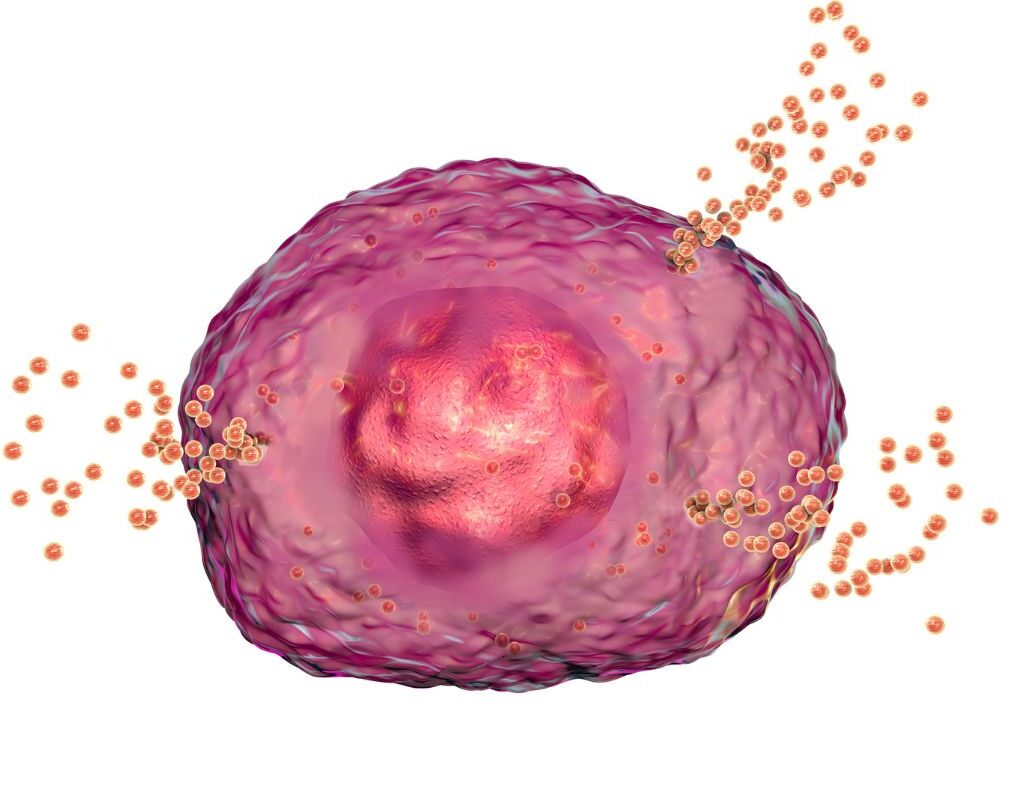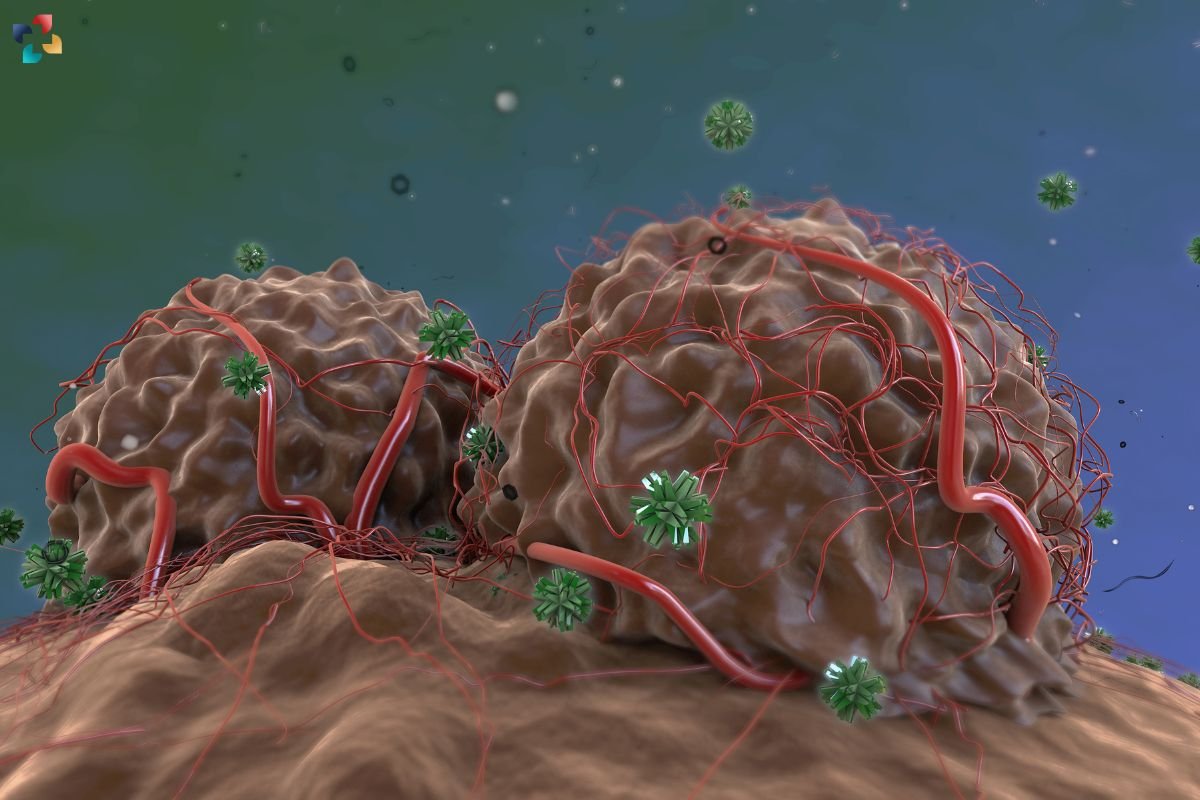Mast cell tumors (MCTs) are one of the most common types of skin cancer in dogs, constituting about 20% of all skin tumors. These tumors arise from mast cells, which are a type of white blood cell involved in allergic reactions and immune responses. While mast cell tumors can occur in any breed, certain breeds, such as Boxers, Pugs, and Golden Retrievers, are more predisposed to developing this condition. Understanding mast cell tumors is crucial for dog owners to recognize symptoms, seek appropriate veterinary care, and manage their pets’ health effectively.
What are Mast Cell Tumors?
Mast cells are part of the immune system and play a vital role in defending the body against pathogens. They contain granules rich in histamine, heparin, and other chemicals that are released during allergic reactions and inflammatory processes. When these cells proliferate uncontrollably, they form mast cell tumors. These tumors can vary significantly in appearance, ranging from small, benign nodules to large, aggressive masses.
Mast cell tumors can be found anywhere on the body but are most commonly located on the skin, particularly on the limbs, abdomen, and chest. They can also develop internally, affecting organs such as the spleen, liver, and bone marrow.
Symptoms of Mast Cell Tumors
The symptoms of mast cell tumors can vary widely depending on the tumor’s location, size, and stage of development. Some common signs to look out for include:
- Lumps or Bumps: Any new or changing lumps on your dog’s skin should be examined by a veterinarian. Mast cell tumors can appear as small, firm nodules or larger, ulcerated masses.
- Redness and Swelling: Due to the release of histamine and other chemicals, the area around the tumor may become red, swollen, and itchy.
- Gastrointestinal Symptoms: If the tumor releases histamine into the bloodstream, it can cause vomiting, diarrhea, and loss of appetite.

- Bruising: The release of heparin, an anticoagulant, can cause bruising around the tumor site.
- Ulceration: Advanced tumors may ulcerate and become prone to infection.
Early detection is key to improving the prognosis for dogs with mast cell tumors. Regularly checking your pet for any unusual lumps or changes in existing lumps can facilitate early diagnosis and treatment.
Diagnosis of Mast Cell Tumors
If you suspect your dog has a mast cell tumor, it is essential to seek veterinary care promptly. The diagnostic process typically involves several steps:
- Physical Examination: The veterinarian will conduct a thorough physical examination, assessing the size, location, and characteristics of the lump.
- Fine Needle Aspiration (FNA): This minimally invasive procedure involves inserting a thin needle into the tumor to extract cells for examination under a microscope. FNA is often the first step in diagnosing mast cell tumors.
- Biopsy: If FNA results are inconclusive or if the tumor appears aggressive, a biopsy may be performed. This involves surgically removing a small tissue sample for histopathological analysis.
- Blood Tests: Blood work can help evaluate the overall health of the dog and identify any underlying conditions that may affect treatment.
- Imaging: X-rays, ultrasounds, or CT scans may be used to determine if the tumor has spread to other parts of the body.
Grading and staging the tumor is crucial for determining the appropriate treatment plan and prognosis. Mast cell tumors are graded based on their appearance under the microscope and staged according to the extent of their spread.
Treatment Options for Mast Cell Tumors

The treatment of mast cell tumors depends on several factors, including the tumor’s grade, stage, location, and the overall health of the dog. The primary treatment modalities include:
1. Surgical Removal
Surgical excision is often the first line of treatment for mast cell tumors. The goal is to remove the tumor with clean margins, which means taking out some normal tissue around the tumor to ensure no cancerous cells are left behind. This is particularly effective for low-grade tumors that have not metastasized.
2. Radiation Therapy
Radiation therapy is commonly used for mast cell tumors that cannot be completely removed surgically or for tumors located in areas where surgery would be challenging. Radiation can also be used post-operatively to target any remaining cancerous cells and reduce the risk of recurrence.
3. Chemotherapy
Chemotherapy may be recommended for high-grade or metastatic mast cell tumors. It involves the use of drugs to kill cancer cells or inhibit their growth. While chemotherapy can have side effects, many dogs tolerate the treatment well, and it can significantly extend their lifespan and improve their quality of life.
4. Targeted Therapies
Targeted therapies, such as tyrosine kinase inhibitors (e.g., Palladia and Kinavet), have shown promise in treating mast cell tumors. These drugs specifically target the abnormal proteins that drive tumor growth, offering a more precise approach with potentially fewer side effects than traditional chemotherapy.
5. Supportive Care
Supportive care is crucial for managing the symptoms associated with mast cell tumors. Antihistamines can help control itching and swelling, while medications like corticosteroids can reduce inflammation and improve comfort. Gastroprotective drugs may be prescribed to prevent ulcers and manage gastrointestinal symptoms.
6. Prognosis and Long-Term Management
The prognosis for dogs with mast cell tumors varies widely depending on the tumor’s grade, stage, and location, as well as the effectiveness of the treatment. Low-grade tumors that are surgically removed with clean margins often have an excellent prognosis, with many dogs living normal, healthy lives post-treatment. High-grade or metastatic tumors, however, tend to have a more guarded prognosis.
Regular follow-up visits with the veterinarian are essential for monitoring the dog’s health and detecting any signs of recurrence or metastasis early. Routine blood tests, imaging studies, and physical examinations are typically part of the long-term management plan.
Preventive Measures and Awareness
While it is not always possible to prevent mast cell tumors, certain measures can help reduce the risk and ensure early detection:

- Regular Check-ups: Regular veterinary check-ups can help catch health issues early, including mast cell tumors. Discuss any new lumps or changes in your dog’s skin with your veterinarian promptly.
- Skin Inspections: Routinely inspect your dog’s skin for any unusual lumps, bumps, or changes in existing growths. Early detection can significantly improve treatment outcomes.
- Healthy Lifestyle: Maintain a healthy lifestyle for your dog with a balanced diet, regular exercise, and proper weight management. A healthy immune system can help the body fight off various diseases, including cancer.
Emotional and Financial Considerations
Dealing with a diagnosis of mast cell tumors can be emotionally challenging for pet owners. It is important to have a support system in place and to seek advice from veterinary professionals who can provide guidance and reassurance. Additionally, the financial aspect of treating mast cell tumors can be significant, involving costs for surgery, radiation, chemotherapy, and follow-up care. Pet insurance or financial assistance programs may help alleviate some of these burdens.
Conclusion
Mast cell tumors are a common but potentially serious condition in dogs that require prompt and effective veterinary intervention. Understanding the nature of these tumors, recognizing the symptoms, and seeking appropriate treatment can significantly improve the prognosis for affected dogs. Advances in veterinary medicine, including surgical techniques, radiation therapy, chemotherapy, and targeted therapies, offer hope for successful management of mast cell tumors. Regular veterinary care, routine skin inspections, and maintaining a healthy lifestyle for your dog are key preventive measures that can help ensure early detection and treatment. By staying informed and proactive, dog owners can navigate the challenges of mast cell tumors and provide the best possible care for their beloved pets.







